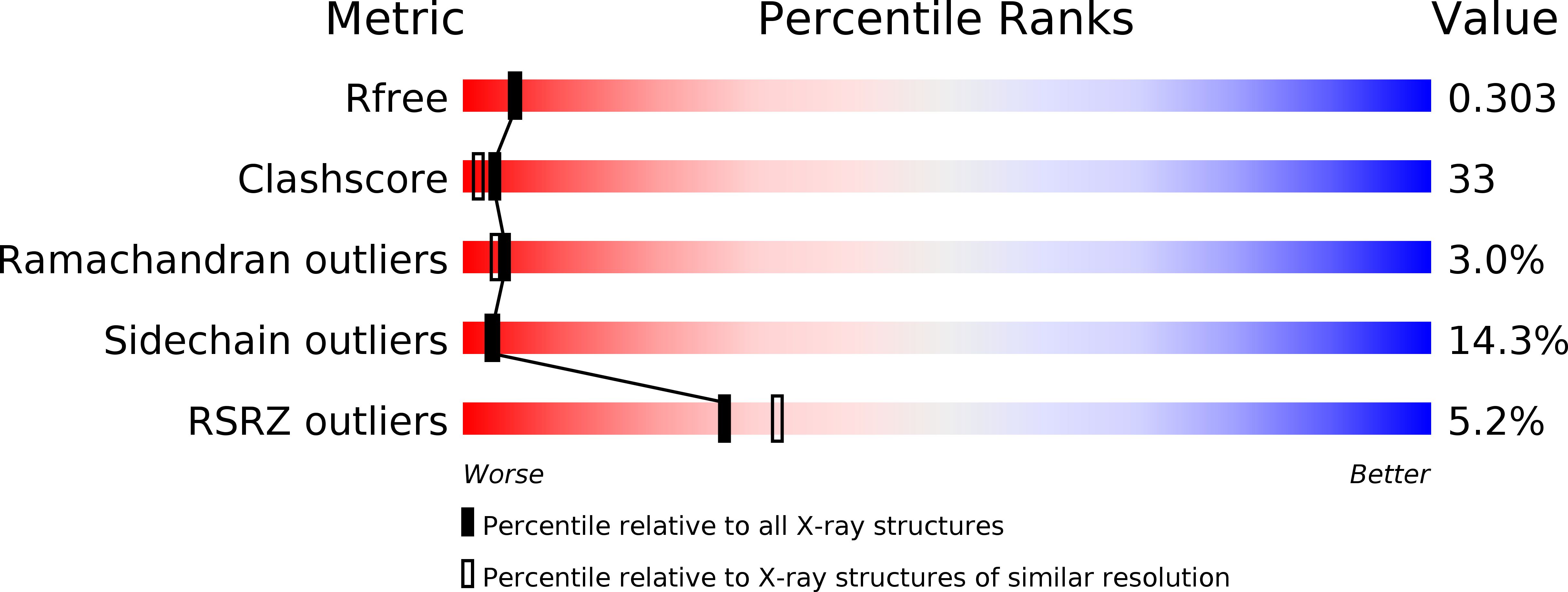
Deposition Date
2012-10-30
Release Date
2013-08-28
Last Version Date
2023-12-20
Entry Detail
PDB ID:
2YPF
Keywords:
Title:
Structure of the AvrBs3-DNA complex provides new insights into the initial thymine-recognition mechanism
Biological Source:
Source Organism:
XANTHOMONAS CAMPESTRIS (Taxon ID: 339)
SYNTHETIC CONSTRUCT (Taxon ID: 32630)
SYNTHETIC CONSTRUCT (Taxon ID: 32630)
Host Organism:
Method Details:
Experimental Method:
Resolution:
2.55 Å
R-Value Free:
0.28
R-Value Work:
0.23
R-Value Observed:
0.23
Space Group:
C 1 2 1


